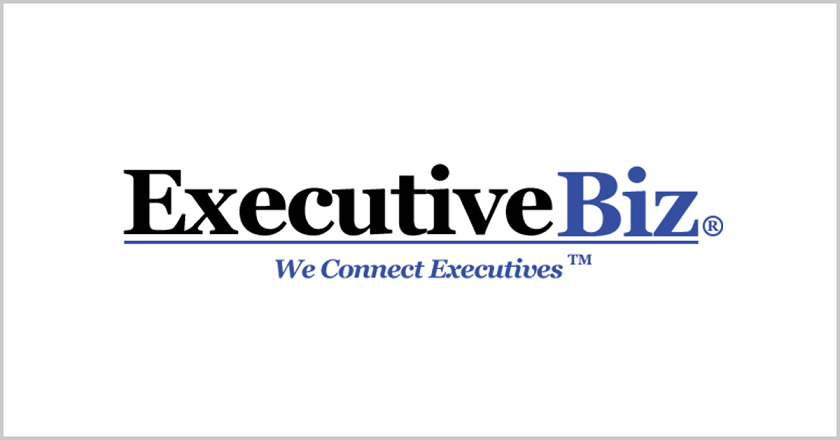When you think of small businesses, size standards are generally the first things that come to mind. The Small Business Administration (SBA) has been defining them since 1977 as authorized by the Small Business Act. These standards help the government determine small businesses’ federal assistance eligibility, strengthen competitive advantage, and increase federal procurement opportunities against large corporations.
Currently, the SBA has classified over 97% of all firms as small, constituting about 30% of industry receipts. Keep reading to know more about what qualifies as a small business!
Table of Contents
What are the SBA’s standards for small businesses?
The SBA is a federal agency committed to helping small businesses grow and prosper. Here are ways it developed small business size definitions:
1. Number of employees
Generally, the Small Business Administration qualifies small businesses with a maximum of 500 employees, according to the table of size standards. However, it may depend on the industry. A company can have up to 1,500 employees and still be counted as a small business because there are other relevant factors to consider, like annual receipts, which apply to music production and print publication industries. Here are other examples:
Wholesale trade
Employees – should be from 0 to 500
Manufacturing
Employees – should range from 500 to 1250
Warehousing and transportation
Employees – should range from 500 to 1500 depending on the subsector.
But how does the SBA count every employee as an individual worker? It does this by counting the number by these categories:
- Part-time
- Full-time
- Temporary
- Contractors
The employee count is averaged on an annual basis. In the case of new businesses, the total number of payroll periods is available.
2. Annual receipts
The maximum annual receipt of a “small business” with less than 1500 employees is $41.5 million on average. The SBA measures the average annual receipts over the past three fiscal years. The typical industries generally sized by this are construction, farming, and retail. In the case of new car dealerships, the main standard is still the number of employees.
Insurance and finance
Annual average receipts – should be at a maximum of $32.5 to 38.5 million
Retail trade
Annual receipts – the average should be from $7.5 to 38.5 million
Information service
Annual average receipts – should range from $7.5 to 38.5 million.
Warehousing and transportation
Annual receipts – should be $30 million and below
Also, the SBA aims to expand its receipts-based size standards for North American Industry Classification System (NAICS) sectors associated with:
- Professional, scientific, and technical services
- Companies and enterprises’ management
- Administrative and support and waste management and remediation services
Take your average total income in the prior three fiscal years and divide it by 3 to sum up your average annual receipt. For example, the yearly maximum receipt of architectural and engineering services should be $4,500,000 (except for landscape architectural services) to be considered a small business enterprise.
New businesses should calculate these by multiplying their average weekly revenue by 52. Keep in mind that the following are not to include in the calculation:
- Taxes (e.g., sales taxes)
- Net capital losses and gains
- Fees collected by brokers and agents
- Proceeds transacted between the business’s affiliates
3. Affiliates
Small businesses with affiliates should use their receipts and employees when determining business size. Affiliates have the right to 50% ownership or more. Companies that did not reach the 50% ownership can still earn the affiliate status depending on the contractual agreements. Further, the SBA determines affiliations based on 13 CFR 121.103 with ten exemptions.
4. Business type
The six-digit NAICS code is another standard the SBA uses to determine small business qualifications. You can view the full breakdown for other industries in the Electronic Code of Federal Regulations. Also, businesses outside the country can still qualify as small if they have significant ongoing contributions to the American economy through paying taxes and purchasing local products, labor, and materials.
The SBA’s comprehensive review of size standards
The SBA comprehensively reviewed the size standards in 2007. Three years after, Congress enacted the Jobs Act (2010), which requires the SBA to run a thorough review and make the necessary changes to reflect federal market conditions. This made the SBA review almost half of the size standards after every 18 months from its enactment date and review the whole standards at least once every five years.
What are the benefits of increasing size standards?
The SBA is an excellent source of funding for small businesses. However, some larger firms use the SBA to keep staying competitive in the industry. It issued the four final rules to increase the small business standards in four industry sectors. This will result in:
- Retaining their eligibility for a longer time
- Benefitting from less paperwork, less expensive fees, and fewer compliance requirements
- More businesses gaining eligibility for federal small business assistance programs
- It would encourage private equity firms to invest in more small business startups instead of just investing in large companies that already have access to capital through banks and venture capitalists.
What are the small business programs?
The SBA has several federal contracting programs to help small enterprises win 23% of federal contracting dollars annually.
Women-owned small business program
The women-owned small business program is available to female entrepreneurs. The SBA designed it to help women compete for federal contracts in industries where women-owned small businesses (WOSBs) are usually underrepresented. The program offers counseling, training, and financial advice from SBA partners. Also, the federal government’s goal is to award 5% of the contracting dollars to WOSBs yearly.
Program eligibility requirements
- The business should be at least 51% owned by an American woman or women.
- The business should be qualified according to the SBA’s small business size standards
- The female business owner should manage the daily operations and be in charge of long-term planning.
HUBzone program
The HUBZone program helps businesses grow in historically underutilized areas in 900 rural and 7000 urban communities. It aims to award at least 3% of the contracting dollars to certified HUBZone businesses yearly.
Program eligibility requirements
- HUBZone firms must be owned by 51% American citizens, an Indian tribe, a community development corporation, or an agricultural member
- HUBZone firms must be qualified in the SBA small business standards
- The employees residing in the HUBZone should be 35% and above
- The business’ main office must be located in the HUBZone, including Indian County and military facilities shut down by the Closure Act and the Base Realignment
8(a) business development program
The 8(a) business development program provides small businesses with training, counseling, and technical assistance to be effectively competent in the U.S. economy. It’s managed by the SBA together with federal agencies and minority business development agencies (MBDA) to help small business owners with their application process.
Program eligibility requirements
- Should have no prior experience in the past 8(a) programs
- Must be a small business
- The owner must have a personal net worth of not more than $750,000
- The owner must have an adjusted gross income of no more than $350,000
- The owner must have assets of no more than $6 million
- The owner must be operating the business for at least two years with proven potential for success
Service-disabled veteran-owned small business program
The SBA’s service-disabled veteran-owned small business program provides financial assistance to qualified service-disabled veterans and their spouses who own and operate small businesses in low-income areas. This program aims to help the federal government meet its yearly goal of awarding at least 3% of federal contracting dollars to this type of small business.
Program eligibility requirements
- Must be a certified small business
- The veteran must possess service-connected disabilities
- One or more service-disabled veterans should be in charge of the daily operations and long-term planning.
Title 13 Part 125 Subpart B of the Code of Federal Regulations lists the complete eligibility requirements.
What is the small business size protest?

SBA’s protest regulations are stated in subpart D “Protests” at 13 CFR 125.24 to 125.28. It happens when firms eligible think that the chosen candidate of business set-aside opportunities or federal government contracts is actually a large company pretending to be a small business concern.
They can do this by submitting protests to the SBA. This is important because the federal government reserves procurement dollars specifically for small companies. The protestor can then challenge the awardee’s business size by presenting factual and legal evidence for the size protest.
In addition, the regulatory flexibility act of 1980 is a United States federal law that requires the preparation of a regulatory flexibility analysis by federal agencies prior to the issuance of a final rule. It also requires federal agencies to explain, in general terms, how they believe the proposed size standards rules will affect small firms and other entities.
What are the benefits of getting SBA-certified?
Earning the small business status comes with lots of advantages. According to the SBA, being “certified” means that a business has met certain qualifications and standards. Here is a list of benefits of being one:
1. Increased credibility
The certificate and seal help to reinforce a small business’s brand. The more credible your brand is, the better you will be able to attract sales and customers.
2. Loans
The SBA works with their certified lenders to act as a co-signer for small businesses needing extra money for their business. Also, it gives lenders a money-back guarantee, giving them more access to greater borrowing rates.
3. Government contracting
Government contracting allows small businesses to get involved with the federal government at all levels. The SBA also helps small firms obtain government contracts to compete with larger businesses in their industry through contracting assistance programs. The participants of these programs can enjoy the following benefits:
- Be eligible for an exclusive sole-source contract and set-aside contract
- Get a chance to work with established prime contractors to win multiple-award contracts at a single solicitation
- Win a fair share of federal contracting dollars
- Business contractors can access free mentorships and guides to learn more about federal contracting opportunities.
5. Grants
Unlike loans, small businesses receive competitive grant awards from state and federal governments that don’t need to be paid back. The amount of funding available to small business awardees is often enough for them to expand, hire new employees, and purchase new equipment.





